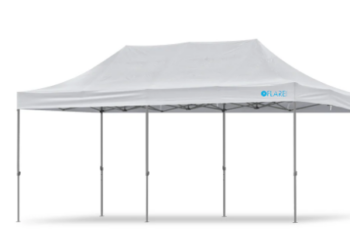Glass guardrails are advanced solutions that enhance and redefine any given area while offering a clear view and security. However, before you get down to work and construct a glass guardrail, there are a number of factors that need to be taken into consideration. In this guide, step by step, you will learn the most important aspects and recommendations for the installation of the device collar.
Understand Your Design Needs
First of all, think of the overall decoration and the intended use of the space where one will be installing the glass guardrail. Are you intending to beautify an indoor staircase or a balcony, or an outdoor deck? Any of those places could require different kinds of glass, installation methods as well as fittings. For example, laminated glass is used mostly in areas with heavy traffic where standard glasses are likely to crack over time. On the other hand, some people like bracketed panels due to their thin, safe and strong construction.
Tip: Consider the functional and aesthetic aspects of the glass guardrail within the overall interior concept, in particular against the background of the floor, furniture, light, etc.
Review Local Codes and Regulations on Building Structures
Before any steps of installation are taken, one of the most crucial aspects is knowledge of local building laws. Guarding edges with glass requires certain precautions so that the screen is pressure and impact resistant. Such requirements usually take care of the minimum and maximum height of the guard rail, the thickness of the glass as well as the materials to be employed.
Tip: Before proceeding with your design, it would be wise to speak to architectural professionals or local ordinances to make an assessment of the codes and other regulations that you will need to comply with.
Choose The Right Glass Type
In particular case of guardrails, not every glass out there will work. The two most common types are tempered glass and laminated glass. For instance, tempered glass is enhanced with specifications that do not compromise its basic characteristics and add protective elements, such as impact resistance – which is safer to use. Laminated glass, conversely, is composed of different layers and therefore, even if damaged, the glass is not likely to fall out as they remain in the interlayer.
Tip: If the installation is done outdoors, opt for glass with UV resistant coatings that prevent fading.
Consider The Installation Process
Fitting a glass guardrail is certainly not a household DIY type of work. This is precision work that needs accurate measurements, specialized equipment, and skills to properly and safely fix the guardrail system in place. This includes drilling into concrete or wooden surfaces, placing the glass, and securing it with wood or metal posts.
Tip: In addition to saving time, bringing in an expert installer also reduces the number of mistakes that may arise during the installation, which may undermine the guardrail stability and safety.
Maintenance and care
Although glass guardrails are aesthetically pleasing these items should also be given consideration through simple tasks to maintain them. Any dust, fingerprints, or water stains will spoil their beauty in no time. They can easily be maintained on a regular basis by employing some glass cleaner and a soft cloth.
Tip: If outdoor installations are concerned, water resistant coating may be a good alternative to lessen streaks and water spots.
Cost consideration
A glass guardrail unit price can be influenced by several factors, some of which might be shape templates or specifications, isolated installation requirements, and place. Anyone wishing to get glass guardrails knows that they need to part with more pennies than when they go for wooden railings, all these comes with beauty and durability.
Tip: Ask more than one contractor and try to factor in the cost of the installation over its period of usage into the budget for the installation project.
Safety comes first
The safety of the environment and individuals should be the utmost concern when fixing a glass guardrail. Verify that the glass railing panels are not made of the flimsy type, and that the glass barrier is bolted somewhere firmly. If children and pets are present, or may be present, careful consideration must be given to adding a protective cover, such as a handrail, to avoid any potential accidents.
Tip: Keep examining the guardrail to look for any other related deterioration of the guardrail and take action against it where necessary for safety purposes.
Conclusion
Installing a glass guardrail can elevate the design of your space, providing a sleek, modern look while ensuring safety. By considering factors such as design needs, local regulations, glass type, and professional installation, you can achieve a beautiful and functional guardrail that stands the test of time. Whether you’re enhancing your home or a commercial property, a glass guardrail is an investment in both style and safety.







